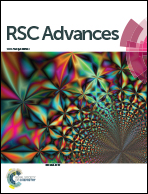A review on materials for light scattering in dye-sensitized solar cells
Abstract
Dye-sensitized solar cells (DSCs) offer interesting possibilities in photovoltaics which is the technology of harvesting solar photons to generate electricity. Improving the charge transport through the metal oxide film, finding dyes with better absorption both in the visible and near IR regions of the solar spectrum and fabricating innovative materials for the scattering layer are the proposed way forward for improving the efficiency of DSCs. Light scattering is employed in dye-sensitized solar cells to improve the optical absorption of the incident light. The conventional method of light scattering in DSCs is by using a separate scattering layer consisting of large particles with diameters comparable to the wavelength of the incident light. An additional over-layer on the nanocrystalline TiO2 photoanode will encourage light scattering in DSCs especially in the red part of the solar spectrum. Different nanostructures with good dye adsorption and light scattering properties were tried as light scattering layers in DSCs. Of late, scientists have attempted to use functional materials having enhanced light scattering properties and high internal surface area as dual function materials (that is a single layer of material capable of both light absorption and scattering). This review explores theoretical aspects and materials innovation for light scattering and their application in DSCs.


 Please wait while we load your content...
Please wait while we load your content...